-
Forensic scientists recover fingerprints from foods

Forensic scientists at the University of Abertay Dundee have recovered latent fingerprints from foods — publishing the U.K.’s first academic paper on this subject. Only two other studies have ever reported successfully recovering fingerprints from foods, but the research for these took place in India and Slovenia using chemical substances that are not routinely used in Britain.
-
-
Footwear safety reflectors help in detecting bioterror threats
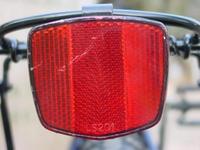
Tiny versions of the reflectors on sneakers and bicycle fenders that help ensure the safety of runners and bikers at night are moving toward another role in detecting bioterrorism threats and diagnosing everyday infectious diseases, scientists said the other day.
-
-
DHS, international tech-crime investigative body, partners on cybersecurity
The High Technology Crime Investigation Association (HTCIA) said it would team up with DHS Stop. Think. Connect. Campaign’s National Network. The partnership will promote awareness of cyber security to industry, university, and government organizations nationwide.
-
-
Sponsors of CISPA to address nagging privacy concerns about the bill
House Intelligence Committee chairman Mike Rogers (R-Michigan) and Ranking Member Dutch Ruppersberger (D-Maryland), sponsors of the Cyber Information Sharing and Protection Act (CISPA), say they are currently working on the draft to alleviate privacy concerns civil liberty advocates may have about the bill.
-
-
More border security means more business opportunities for tech companies
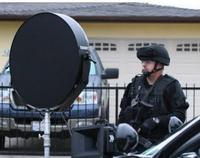
At last month’s Border Security Expo in Phoenix, both start-ups and established companies showed off their inventions in an effort to pitch projects to federal agencies. Two themes emerged in the show: the expo demonstrated that many of the systems and weapons systems that were used in the Iraq and Afghanistan wars are now becoming available to local, state, and federal law enforcement agencies – and companies expressed concern about the impact the federal budget cuts will have on their pockets.
-
-
California city could become first in the state to ban drones
The City Council in Rancho Mirage, California was set to vote yesterday on a proposal which would ban the use of drones in residential areas in the city. If it passes, it will be the first law of its kind in the state. The ordinance would ban the flying of “unmanned aircraft that can fly under the control of a remote pilot or by a geographic positions system (GPS) guided autopilot mechanism” up to 400 feet above areas that have been zoned residential.
-
-
A more powerful terahertz imaging system developed
Low-energy terahertz radiation could potentially enable doctors to see deep into tissues without the damaging effects of X-rays, or allow security guards to identify chemicals in a package without opening it. An electrical engineering research team has developed a laser-powered terahertz source and detector system which transmits with fifty times more power and receives with thirty times more sensitivity than existing technologies. This offers 1,500 times more powerful systems for imaging and sensing applications.
-
-
In 2012, Microsoft received 70,665 law-enforcement requests for customer information
On Thursday, Microsoft released the number of law enforcement requests it has received for information on its hundreds of millions of customers. By releasing the information, Microsoft is now putting itself on the same team as Google, Twitter, Yahoo, and other Web businesses which have published reports on law-enforcement request for customer information. In 2012 Microsoft received a total of 70,665 law-enforcement requests for customer information.
-
-
Interoperability for automated fingerprint ID systems
A new set of publications from the National Institute of Standards and Technology (NIST) could make it easier, faster, and most importantly, more reliable, for forensic examiners to match a set of fingerprints with those on file in any database, whether local, state, or national.
-
-
FAA gives Arlington, Texas police permission to use UAVs
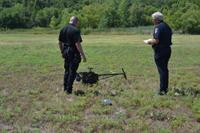
The Federal Aviation Administration (FAA) has given the Arlington (Texas) Police Department permission to use two small helicopter UAVs. The FAA did lay out a set of rules for the police department to follow when using the drones.
-
-
Widely used FBI surveillance method ruled unconstitutional
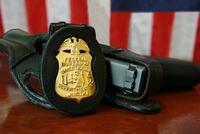
A national security letters (NSLs) is an administrative subpoena which allows the FBI to ask Internet companies and communication service providers to turn over subscriber information on American customers, while prohibiting the providers from informing these customers that their personal information has been turned over to the FBI. Since the 9/11 attacks, the bureau has issued an average of 50,000 NSLs a year. A federal judge in California says this is “rendering the statute impermissibly overbroad.”
-
-
ACLU looks into the use of military technology by local law-enforcement
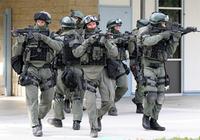
Affiliates of the American Civil Liberties Union in twenty-three difference states have filed more than 255 requests for public records in order to determine how many local police departments are using federally subsidized military technology and tactics – technology and tactics which have that have traditionally been used on battlefields overseas such as, most recently, in the Iraq and Afghanistan wars.
-
-
NIST offers forensic science education and training Webcasts
The National Institute of Standards and Technology (NIST) is offering three upcoming educational and skills-building events — two workshops followed by a conference — for forensic science professionals. All of the events will be free to attend and viewable via live Webcasts.
-
-
Stopping vehicle in their tracks -- remotely
The need to stop vehicles remotely was identified by the law enforcement community. In 2010, the characteristics of a squid’s sticky tendrils were combined with the concept of Spiderman’s super-strong webbing to create a prototype of the first remote device to stop vehicles in their tracks: the Safe, Quick, Undercarriage Immobilization Device (SQUID).
-
-
Infrared digital holography allows firefighters to see through flames, smoke
Firefighters put their lives on the line in some of the most dangerous conditions on Earth. One of their greatest challenges, however, is seeing through thick veils of smoke and walls of flame to find people in need of rescue. A team of Italian researchers has developed a new imaging technique that uses infrared (IR) digital holography to peer through chaotic conflagrations and capture potentially lifesaving and otherwise hidden details.
-
- All
- Regional
- Water
- Biometrics
- Borders/Immig
- Business
- Cybersecurity
- Detection
- Disasters
- Government
- Infrastructure
- International
- Public health
- Public Safety
- Communication interoperabillity
- Emergency services
- Emergency medical services
- Fire
- First response
- IEDs
- Law Enforcement
- Law Enforcement Technology
- Military technology
- Nonlethal weapons
- Nuclear weapons
- Personal protection equipment
- Police
- Notification /alert systems
- Situational awareness
- Weapons systems
- Sci-Tech
- Sector Reports
- Surveillance
- Transportation
Advertising & Marketing: advertise@newswirepubs.com
Editorial: editor@newswirepubs.com
General: info@newswirepubs.com
2010-2011 © News Wire Publications, LLC News Wire Publications, LLC
220 Old Country Road | Suite 200 | Mineola | New York | 11501
Permissions and Policies
Editorial: editor@newswirepubs.com
General: info@newswirepubs.com
2010-2011 © News Wire Publications, LLC News Wire Publications, LLC
220 Old Country Road | Suite 200 | Mineola | New York | 11501
Permissions and Policies
